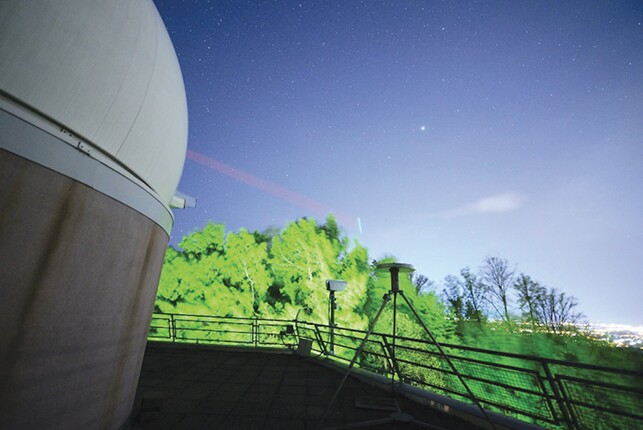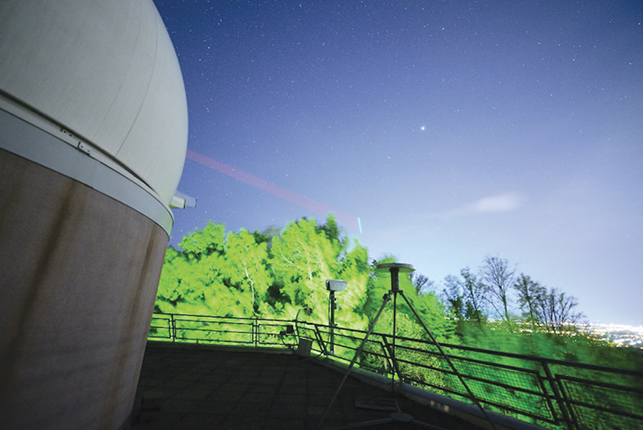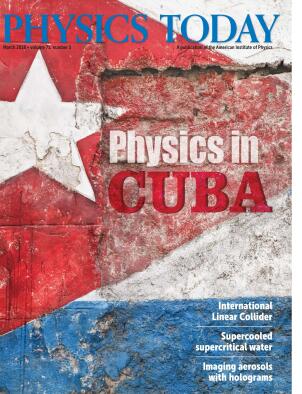Intercontinental quantum communication
DOI: 10.1063/PT.3.3865
In 2016 Jian-Wei Pan of the University of Science and Technology of China and colleagues launched Micius into low-Earth orbit to investigate the potential of satellite-initiated quantum communication. Now, just months after setting a distance record for the distribution of entangled photons (see Physics Today, August 2017, page 14
Micius initiated the link between Graz and Xinglong through a combination of quantum and classical signals, following a version of the BB84 protocol devised by Charles Bennett and Gilles Brassard (see the article by Daniel Gottesman and Hoi-Kwong Lo, Physics Today, November 2000, page 22
To test the secure connection, the Austrian and Chinese researchers exchanged 5-kilobyte JPEG images that were indecipherable without the shared quantum key. They then used most of the remaining bits of the key to ensure the security of a 75-minute intercontinental video conference.

BO LIU

Micius is just one step toward achieving a secure global quantum network, which would require multiple satellites and ground stations working in parallel. Ideally, those satellites would orbit at higher altitudes to cover more ground area and would transmit at longer, telecom wavelengths to enable daytime operation. (S.-K. Liao et al., Phys. Rev. Lett. 120, 030501, 2018, doi:10.1103/PhysRevLett.120.030501
More about the Authors
Andrew Grant. agrant@aip.org
